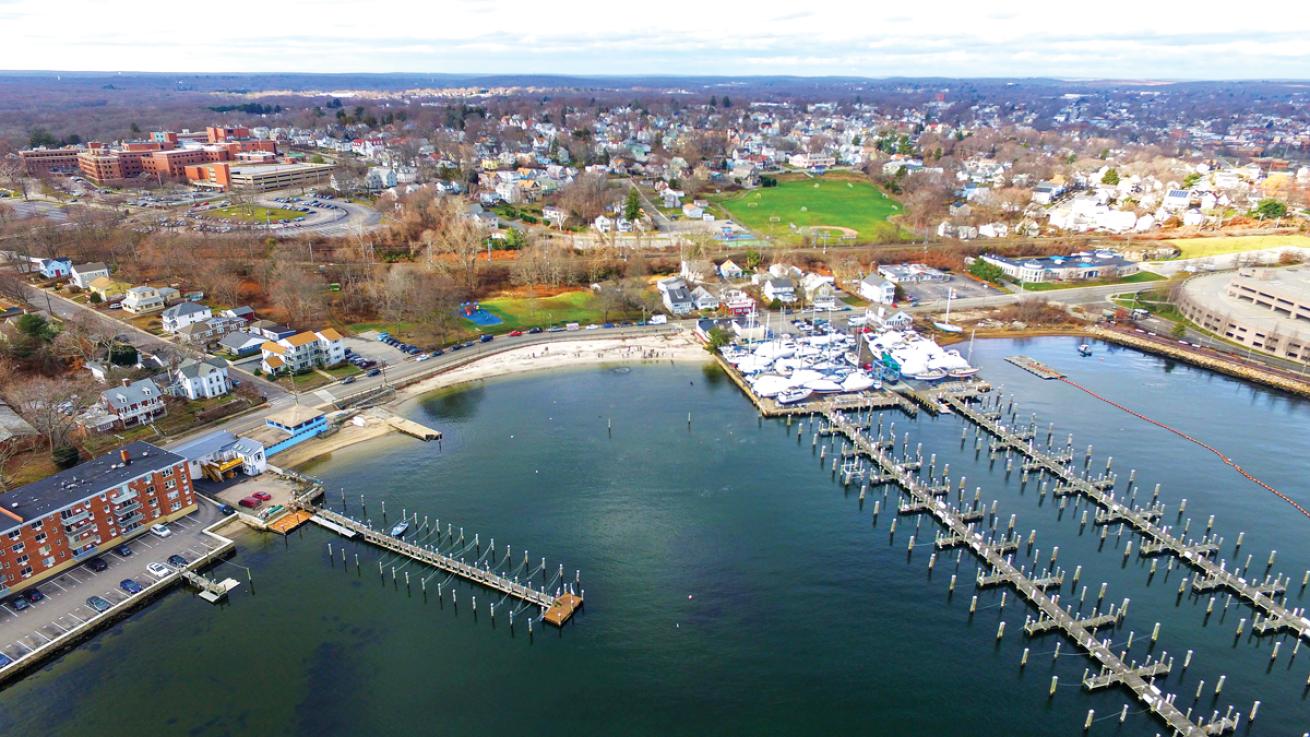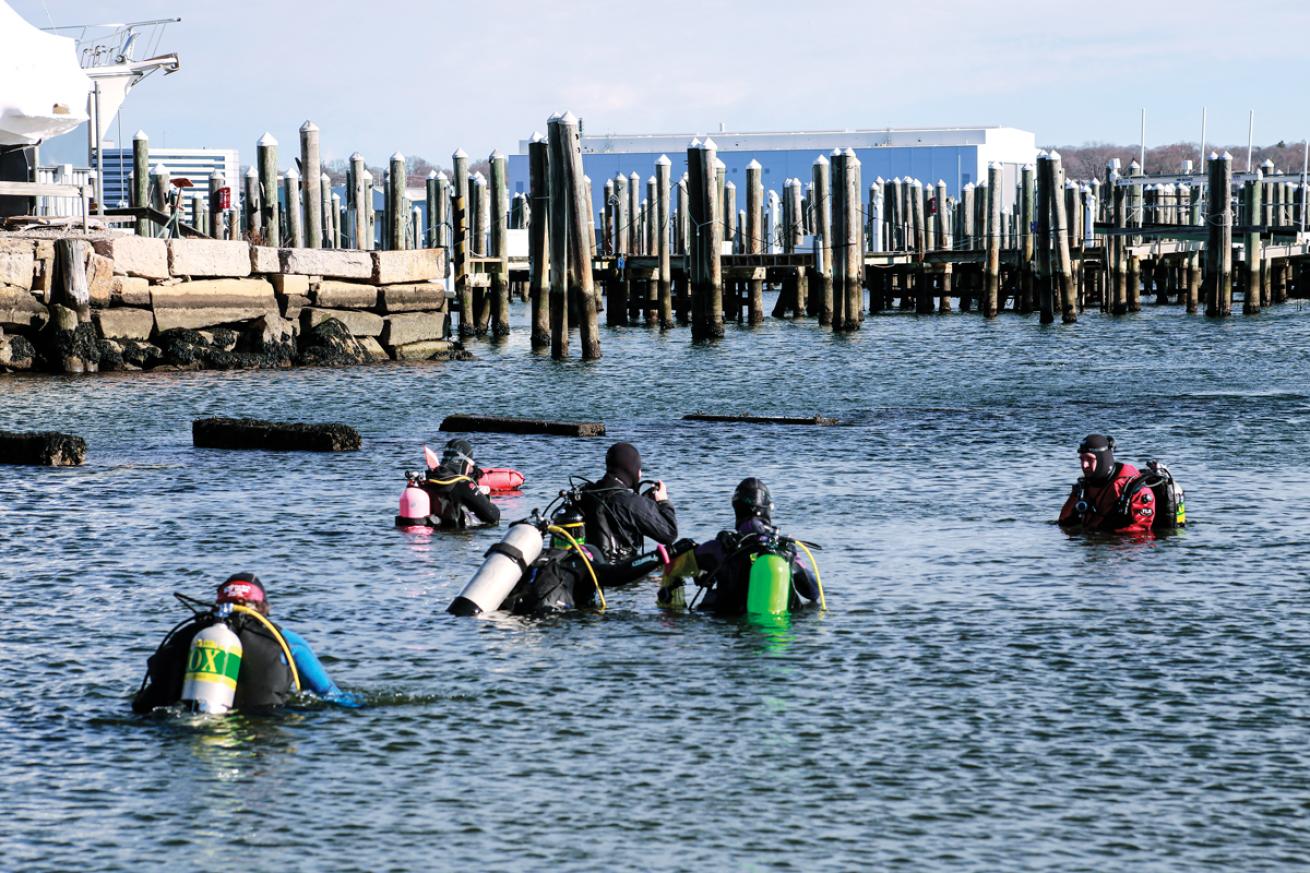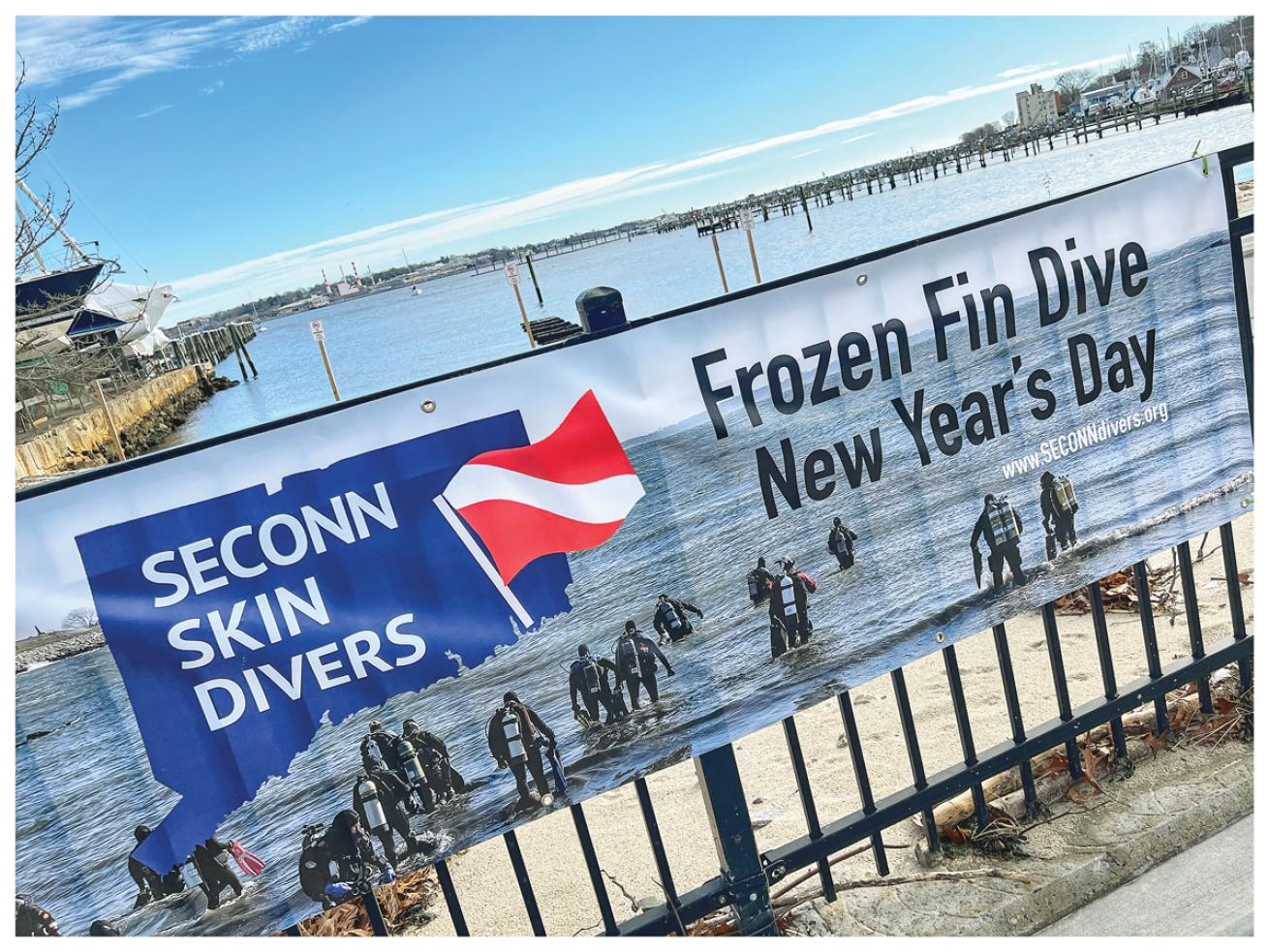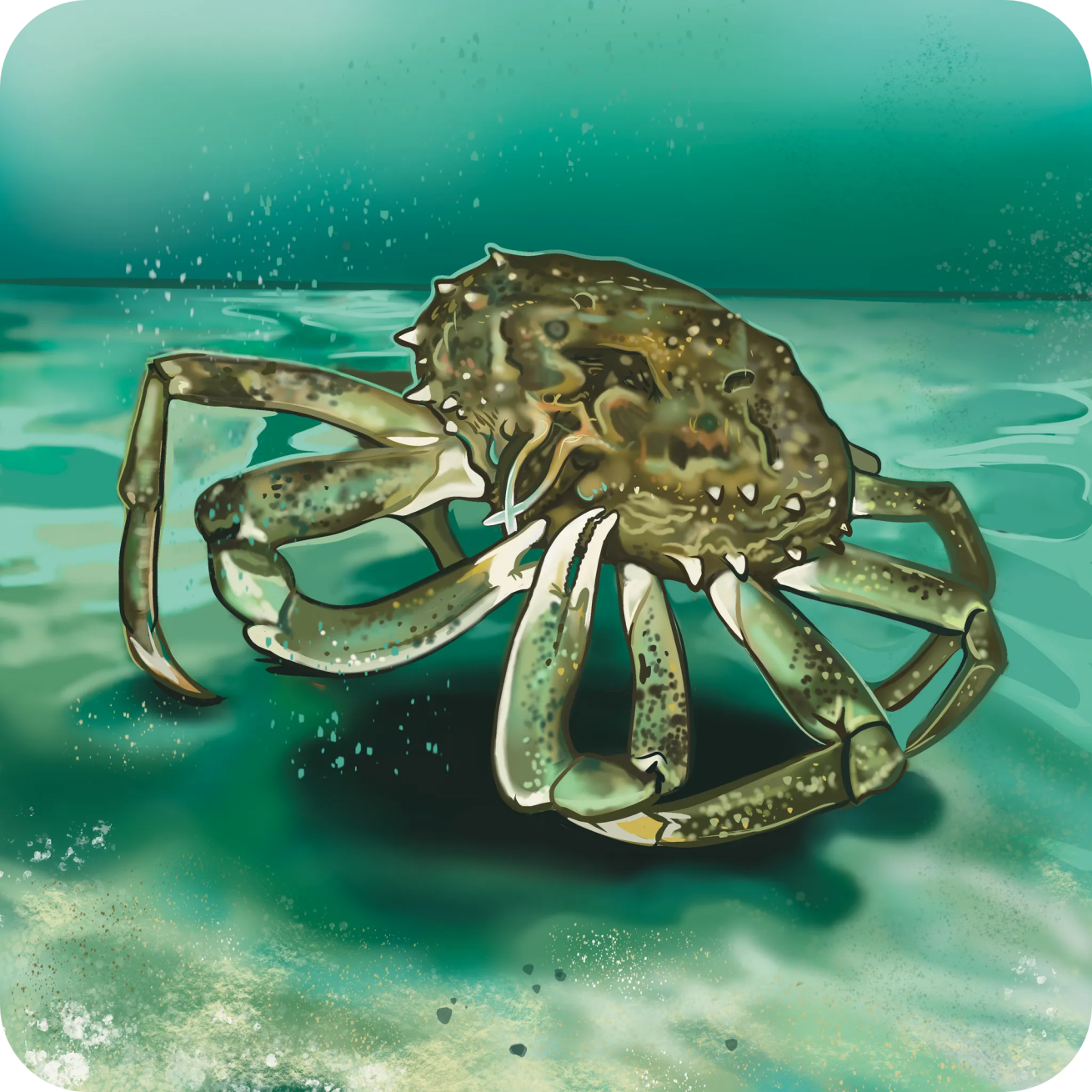How to Dive Green Harbor Beach, Connecticut

Mark RusselFor six decades, members of Connecticut-based SECONN Skin Divers have made it an annual tradition to dive in Long Island Sound from New Haven’s Green Harbor Beach on New Year’s Day.
"We have beautiful, beautiful diving. We don’t have viz, but we have incredible life and incredible wrecks."
Zachary Davidson is the current president of SECONN Skin Divers, a scuba club focused on diving exclusively in southern Connecticut and Rhode Island. The group was founded in 1963, and Davidson, who began his tenure as president last April, led its 60th Frozen Fin dive on January 1, 2024, at Green Harbor Beach.
During this annual tradition, up to 40 divers gather on New Year’s Day for a painted shell scavenger hunt, which earns participants raffle tickets for prizes from local dive shops, operators, and other members of the community.
“It’s our biggest event of the year,” Davidson says.“It appeals to a broad range of divers, there’s easy entry and a task to complete. It’s great for new cold-water divers to get acclimated. After the dive, we gather at a clubhouse for a BYOB party to warm up.”
Related Reading: How to Dive the Blue Heron Bridge in Palm Beach County, Florida

Mark RusselFor six decades, members of Connecticut-based SECONN Skin Divers have made it an annual tradition to dive in Long Island Sound from New Haven’s Green Harbor Beach on New Year’s Day.
Diving in New England is challenging—“not the most consistent,” as Davidson puts it—and the harsh winter conditions can be intimidating. But this popular event draws a crowd every year. Although the water isn’t known for being crystal clear, the winter season brings out the best visibility: Divers glimpse meandering spider crabs, swim around pilings, and take advantage of space free from summertime boaters to practice cold-water diving skills.
SECONN kicks off planning for the event each September. Ryan Patrylak, past president of the dive club, has been attending Frozen Fin since 2007. He explains that the event is both a cleanup and a fundraiser; participants can register as divers or nondivers, who are assigned to the beach to help out the divers.“[Divers are] usually in the water for 15 to 20 minutes,” he says. “You collect scallop shells and also trash.”
The Frozen Fin dive also creates opportunities for the community to connect. In fact, Patrylak’s favorite part is laughing over hot chili or chowder. Divers share details about other sites in areas like Stonington, Connecticut, or Jamestown, Rhode Island, which lie east of New London.
Davidson regularly dives these spots throughout the winter. “We have a lot of life in Long Island Sound and Block Island Sound,” he explains. “Striped bass, scup, tautog, corals and phenomenal wreck diving.”
Patrylak has some advice for those interested in joining their first Frozen Fin dive. “Show up early,” he says. “Usually, the officers get there around 8 to 8:30 a.m., and registration starts at 10 a.m. At the 11 o’clock warning, people start gearing up.”Divers begin entering the water at noon.
Patrylak’s final words of wisdom to avoid derailing the dive day: “Come with gear set up!”
Though marine life sightings may be unpredictable in the winter, and the water definitely isn’t warm, it’s clear that the community is showing up, smiling, and ready to dive.

Glori Shanda HarvardFor six decades, members of Connecticut-based SECONN Skin Divers have made it an annual tradition to dive in Long Island Sound from New Haven’s Green Harbor Beach on New Year’s Day.
“I started diving the annual Frozen Fin a few years ago,” says Glori Shanda Harvard, vice president of SECONN Skin Divers.“ I love that we have a venue to connect in the winter when many are either taking a reprieve from diving or traveling to warmer locations before the New England summer. It’s fun to visit with friends from across the state and feel the energy of the season ahead.”
Site Spotlight

Cassidy VincentSite spotlight: spider crab (Libinia emarginata)
One of the pricklier ocean floor inhabitants of Southern Connecticut is the spider crab (Libinia emarginata). It’s safe to say these spindly-legged creatures hurt to step on. A species of decorator crab, Libinia emarginata adorns itself with minutiae found at the bottom of the sea, such as tiny shells and algae. The practice of “decorating” serves to protect the crabs from predators and camouflage them against the rocky bottom of the cold Atlantic (other types of decorator crabs are found throughout the world, in all temperatures). The spider crabs of the North Atlantic are related to the giant Japanese spider crabs of the North Pacific, which are believed to be the world’s largest arthropods and can weigh over 40 pounds.
Need To Know
Conditions
Average water temps range from the high 30s to mid-40s in January.
How to Get There
Green Harbor Beach is on the west bank of Thames River, south of I-95 in coastal New London.
What to Bring
Dress to your comfort level: 7 mm wetsuit, semi-dry or drysuit.
Local Resources
SECONN Skin Divers seconndivers.org
Dive Shop
Dive On It Scuba (Cumberland, RI) diveonit.com






